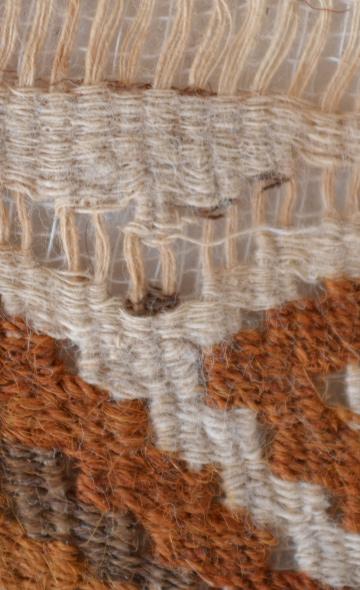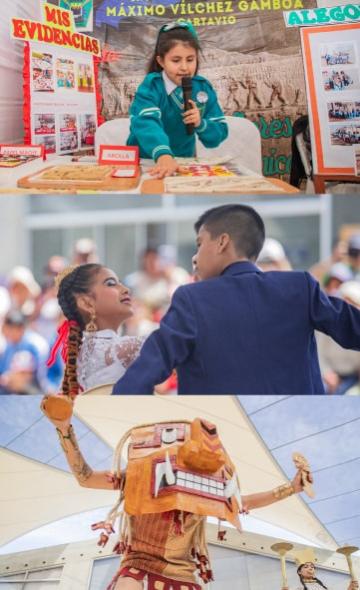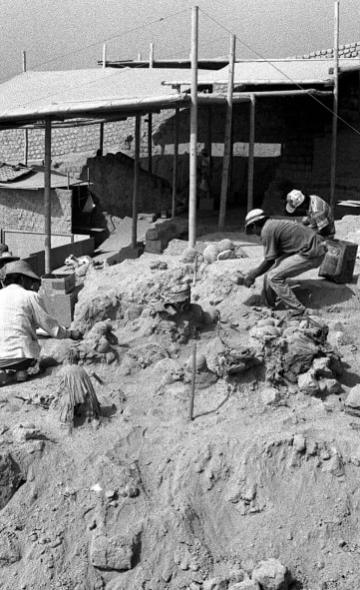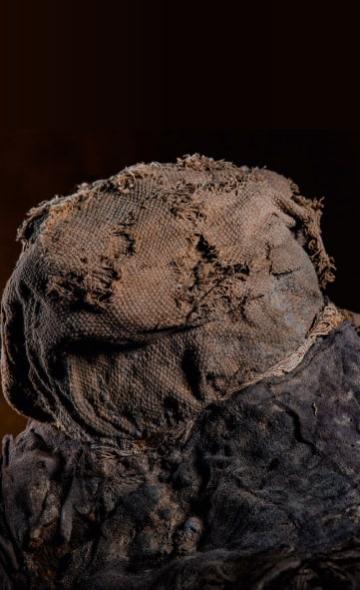- Visitors
- Researchers
- Students
- Community
- Information for the tourist
- Hours and fees
- How to get?
- Virtual tours
- Classic route
- Mystical route
- Specialized route
- Site museum
- Know the town
- Cultural Spaces
- Cao Museum
- Huaca Cao Viejo
- Huaca Prieta
- Huaca Cortada
- Ceremonial Well
- Walls
- Play at home
- Puzzle
- Trivia
- Memorize
- Crosswords
- Alphabet soup
- Crafts
- Pac-Man Moche
- Workshops and Inventory
- Micro-workshops
- Collections inventory
- News
- Students
- The slotted tapestry, a Pre-Hispanic Moche weaving technique that survives to this day
News
CategoriesSelect the category you want to see:

International academic cooperation between the Wiese Foundation and Universidad Federal de Mato Grosso do Sul ...

Clothing at El Brujo: footwear ...
To receive new news.
Por: Complejo Arqueológico El Brujo
When researchers at the El Brujo Archaeological Complex began to study the Lady of Cao, they also analyzed the textiles that made up her mummy bundle. One of these was the second shroud of the Lady of Cao, which is approximately 1700 years old.
This is, according to Rubén Buitron, head of the laboratory at the El Brujo Archaeological Complex, a cloth composed of three large horizontal panels primarily made of cotton with a plain 2x2 weave structure. For Buitron, what is interesting about this piece is that a fringe made with the slotted tapestry technique was attached. On this fringe, there is a representation of a bicephalous serpent on consecutive panels.
The design of the fringe, made with the slotted tapestry technique, also depicts two life fish that come from freshwater; these are associated with the duality that formed a part of the Moche cosmovision.
About the slotted tapestry technique
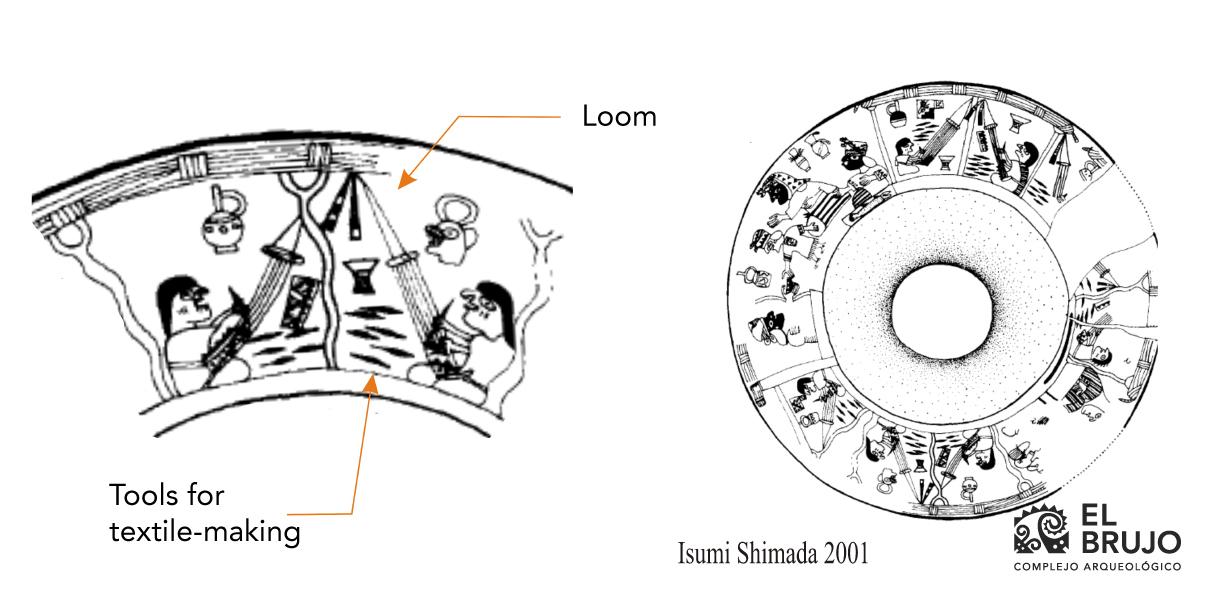
This technique is important because it allows for the representation of very rich and varied colors. Furthermore, it is made with camelid fibers.
The slotted tapestry technique, according to Rubén Buitron, is a type of specialized art. This means that, in Moche culture, there were centers where the population was taught to make this type of products.
The use of the slotted tapestry technique was maintained some 300 years later with the Lambayeque culture; however, during the Inca Period and the Colonial Era, its use decreased until it almost disappeared.
The use of the slotted tapestry technique revived at the El Brujo Archaeological Complex
.jpg)
Even though for a long time the use of the slotted tapestry technique had decreased and almost become extinct, the El Brujo Archaeological Complex currently promotes a return to its use, through the support it gives to the “Lady of Cao Artisans Association”, whom it has taught how to replicate the technique used more than 1700 years ago.
For Karina García, an artisan of the association, revitalizing this technique makes her feel happy and proud of reviving this ancient tradition, because thanks to this the association can stand out both within the Chicama Valley and on a global level: “I feel very proud to be Peruvian, to serve and to work with these techniques that enhance the bicentennial. It is very important for us as artisans to transmit our experiences, our customs, the art, both to Peruvian and international tourists.”
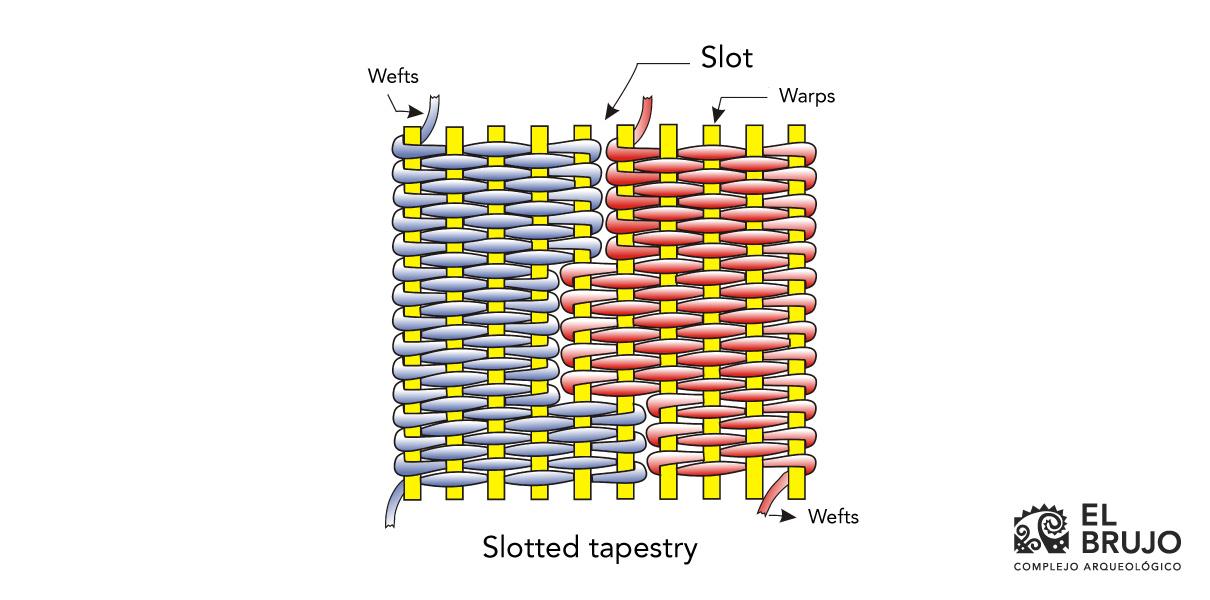
This is also supported by Marina Ávila, another artisan from the association, who says that she feels proud and happy to return to doing work that has been done for thousands of years, especially during these times.
Learn ancient techniques as well in the El Brujo Archaeological Complex’s online workshops
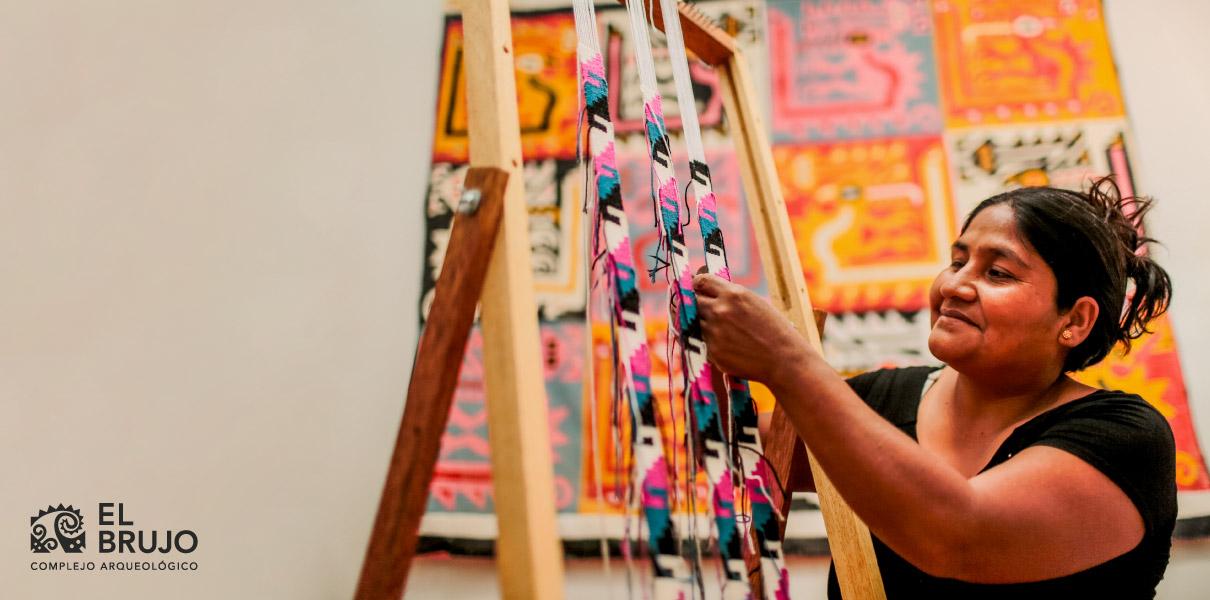
Just like the artisans from the “Lady of Cao” association, you can also learn ancient weaving techniques online. For this purpose, the El Brujo Archaeological Complex has virtual workshops where we have uploaded videos to learn transactional tapestry and Moche tapestry.
Students , outstanding news


